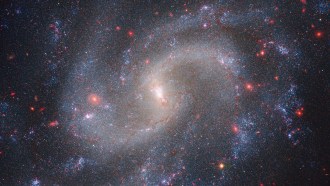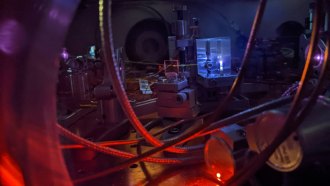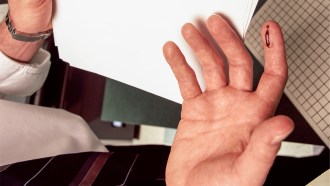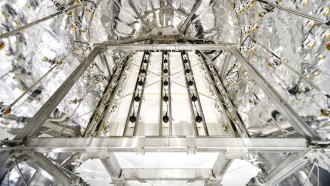
Physics writer Emily Conover joined Science News in 2016. She has a Ph.D. in physics from the University of Chicago, where she studied the weird ways of neutrinos, tiny elementary particles that can zip straight through the Earth. She got her first taste of science writing as a AAAS Mass Media Fellow for the Milwaukee Journal Sentinel. She has previously written for Science Magazine and the American Physical Society. She is a two-time winner of the D.C. Science Writers’ Association Newsbrief award.

Trustworthy journalism comes at a price.
Scientists and journalists share a core belief in questioning, observing and verifying to reach the truth. Science News reports on crucial research and discovery across science disciplines. We need your financial support to make it happen – every contribution makes a difference.
All Stories by Emily Conover
-
 Physics
PhysicsHow to spot tiny black holes that might pass through the solar system
Flybys of primordial black holes may occur once a decade. Tweaks to the orbits of planets and GPS satellites could give away their presence.
-
 Quantum Physics
Quantum PhysicsA quantum computer corrected its own errors, improving its calculations
The corrected calculation had an error rate about a tenth of one done without quantum error correction.
-
 Cosmology
CosmologyIn an epic cosmology clash, rival scientists begin to find common ground
Different measurements of the cosmic expansion rate disagree. The James Webb telescope could determine whether that disagreement is real.
-
 Physics
PhysicsA nuclear clock prototype hints at ultraprecise timekeeping
Nuclear clocks could rival atomic clocks and allow for new tests of fundamental physics. A new experiment demonstrates all the ingredients needed.
-
 Physics
PhysicsMayo is weirdly great for understanding nuclear fusion experiments
Mayonnaise’s texture is perfect for mimicking what a fusion fuel capsule goes through after it’s blasted with lasers.
-
 Particle Physics
Particle PhysicsThe possibilities for dark matter have just shrunk — by a lot
The LZ dark matter experiment has ruled out weakly interacting massive particles, or WIMPs, with a wide range of properties.
-
 Health & Medicine
Health & Medicine50 years ago, scientists blamed migraines on cheese and chocolate
Exactly how migraines develop is still coming into focus, but scientists now know that many factors can trigger attacks.
-
 Physics
PhysicsPaper cut physics pinpoints the most hazardous types of paper
Dot matrix printer paper is the most treacherous, physicists report. Magazine paper comes in second.
-
 Particle Physics
Particle PhysicsDark matter experiments get a first peek at the ‘neutrino fog’
The hint of fog marks a new way to observe neutrinos, but points to the beginning of the end for this type of dark matter detection.
-
 Chemistry
ChemistryA new element on the periodic table might be within reach
Scientists made the known element 116 with a beam of titanium atoms, a technique that could be used to make the undiscovered element 120.
-
 Physics
PhysicsCan light spark superconductivity? A new study reignites debate
Brief blasts of light might make some materials into fleeting superconductors. Magnetic measurements strengthen the case for this controversial claim.
-
 Physics
PhysicsAdvanced nuclear reactors need a different type of uranium. Here’s 4 things to know
The nuclear fuel of the future may be HALEU, high-assay low-enriched uranium. But questions about the material remain.